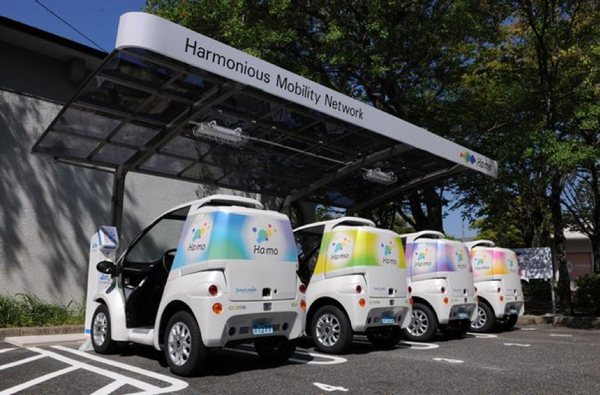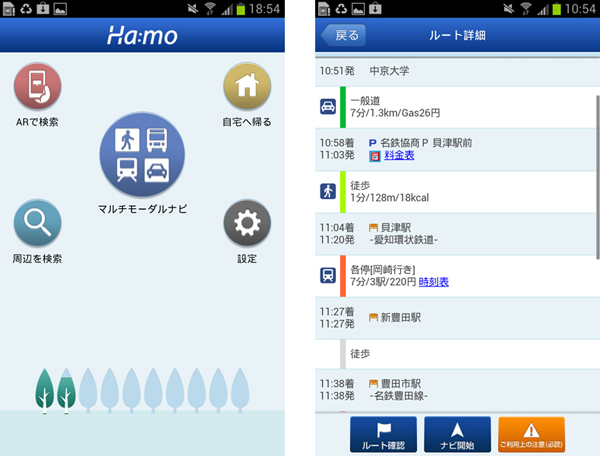What if you could get around major urban centers in a way that best helps you determine more carbon friendly ways to cover longer distances than one might normally walk or bike? Such a system is being slowly tested in Japan by Toyota in cooperation with the Toyota City municipal government, transportation companies and others. It is called Ha:mo by the Japanese automaker, which it coins to be “representative of a ‘harmonious mobility’ network, suggesting mobility that achieves harmony among people and where they live.”
The Ha:mo system, according to Toyota, was brought online this month and is designed to help urban commuters select the most “optimal means of transport for users based on the operational status of public transport systems and traffic conditions.” It consists of two components – one of which focuses upon public transportation options and the other of which is electric vehicle focused – that are being brought together through an app on one’s smartphone.

The Ha:mo Navi component is said to provide “transportation alternatives and encourages use of optimal transport methods based on forecasts of transportation supply and demand,” while also linking to independently operated public transportation and cars. The app one uses with it is described as a multi-modal route guide that “searches for the optimal combination of multiple means of transport—such as trains, buses, cars and taxis—while taking into consideration traffic congestion.” It also provides information on park and ride facilities, such as parking space availability.
The other component of this new system is known as Ha:mo Ride. It is designed to provide so called “optimal use” of vehicle and public transportation for short-distance (within a few miles) travel from a train station to the user’s destination through the sharing of ultra-compact electric cars. In the case of Ha:mo, these cars are Toyota’s “COMS” ultra-compact, single-occupant electric vehicles. These EVs will be placed at unmanned vehicle-sharing stations around Toyota City. To promote what is hoped will be wide and regular use, there will be no charge for the first year of service.
There will initially be a handful of EV stations, which Toyota hopes to grow to between 10 and 20 as time goes along. Ha:mo Ride will initially be limited to 100 individuals from a nearby university who use smartphones and IC cards for EV access, but this will also eventually be expanded to 1000 individuals who will share amongst 100 electric vehicles. When that happens, it will change over to a fee-based service.
Toyota has aggressive plans for the expansion of Ha:mo. They include combing the route information provided by Ha:mo Navi with the EV sharing information provided by Ha:mo Ride “to give users access to integrated route information, travel-history-based recommendations and such information as to encourage dynamic and flexible operation of services by bus and other Ha:mo Ride operators.” Data from Ha:mo will also be tied to an energy data management system (EDMS) pilot program being conducted in Toyota City, according to Toyota, whose aim is to lower overall transportation-system energy use.

This EDMS collaboration will include “transportation route calculations that consider the battery status of plug-in hybrid vehicles of households participating in the project, as well as regional electric power demand.” Toyota also hopes with this EDMS framework to promote off-peak power use through the management of vehicle charging.
And, as if this wasn’t enough, future plans may call for the inclusion of Yamaha electric commuter bikes and electrically power assisted bicycles in the system. All of what’s being done here, said Toyota, was selected “as part of the Next-Generation Energy and Social System Demonstration Projects” sponsored by the Japanese Ministry of Economy, Trade and Industry and are being “conducted under the Toyota City Low-Carbon Verification Project.”